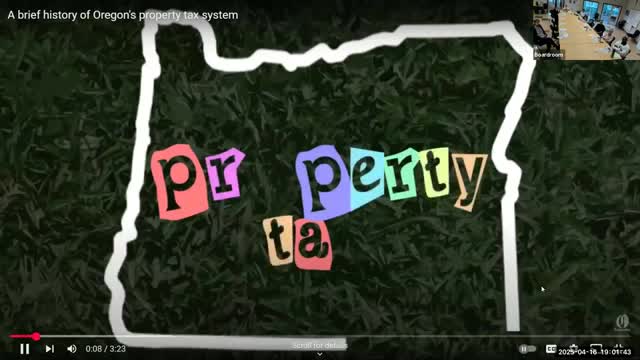Oregon grapples with unequal property tax impacts following Measure 50 reforms
April 24, 2025 | Parkrose SD 3, School Districts, Oregon
Thanks to Scribe from Workplace AI , all articles about Oregon are free for you to enjoy throughout 2025!

This article was created by AI using a video recording of the meeting. It summarizes the key points discussed, but for full details and context, please refer to the video of the full meeting. Link to Full Meeting
Introduced in 1990, Measure 5 capped property taxes at 1.5% of a property's market value in response to public outcry over rising taxes. However, as property values soared, dissatisfaction persisted, leading to Measure 47 in 1996 and its subsequent revision, Measure 50, which established a new calculation method. Under Measure 50, homeowners pay taxes based on their property's 1995 value, adjusted annually by a 3% increase, rather than the current market value.
This system has created a significant imbalance. Homeowners in rapidly gentrifying areas, like Inner Northeast Portland, benefit from lower tax rates on high-value homes, while those in less affluent neighborhoods, such as East Portland and Clackamas County, face a heavier tax burden despite stagnant property values. A striking statistic revealed that if tax savings under Measure 50 were redistributed based on current property values, 57% of homeowners would see their tax bills decrease, indicating that the current system disproportionately favors a minority of homeowners.
The discussion also touched on the historical context of Oregon's tax system, noting that prior to the implementation of Measures 5 and 50, the district thrived under a system called Impact Aid. The shift to the current measures has left many feeling that the tax structure is unfair and detrimental to the district's financial health.
As the Budget Committee continues to explore these issues, the implications of Oregon's property tax system remain a critical topic for homeowners and policymakers alike, raising questions about equity and sustainability in funding local services.
Converted from 2025.04.16 Budget Committee Training meeting on April 24, 2025
Link to Full Meeting
Comments
View full meeting
This article is based on a recent meeting—watch the full video and explore the complete transcript for deeper insights into the discussion.
View full meeting


